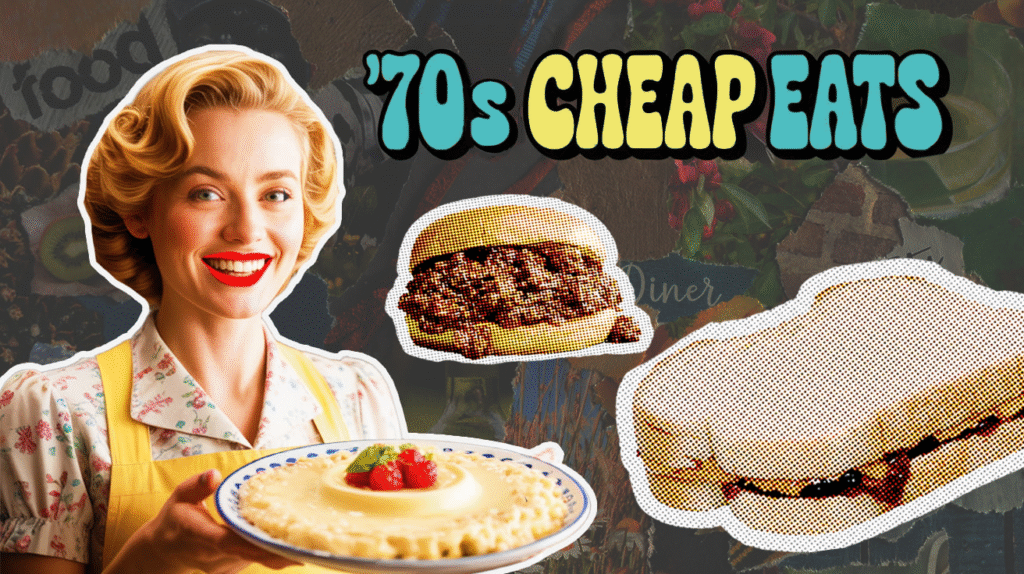
The economic pressures of the 1970s forged a distinctive American kitchen culture, where home cooks developed resourceful techniques out of sheer necessity. Financial uncertainty became the unlikely catalyst for culinary creativity as double-digit inflation and fuel shortages reshaped grocery budgets across the country. Households mastered the art of transforming humble ingredients into meals that provided both nutrition and comfort during challenging times.
These recession-era recipes remain cultural touchstones that reveal as much about America’s resilience as they do about its food preferences.
19. Butter Beans (Lima Beans)

At less than a nickel per serving, butter beans earned their place as the unsung heroes of 1970s budget cooking – the Ringo Starr of the protein world, not flashy but holding the whole meal together with quiet nutritional competence. These pale legumes packed remarkable nutritional density for pennies per serving when meat prices climbed beyond the reach of average families.
Their slightly nutty flavor and creamy texture helped them stand as meal centerpieces rather than mere side dishes, a promotion few vegetables successfully navigate.
Their simple preparation hid their versatility – simmered with a ham bone, they became Southern comfort food; tossed with vinaigrette, they turned into rustic salads; pureed, they made dips that predated hummus’s American invasion by decades. Their high protein and fiber content kept hunger at bay while stretching grocery budgets without sacrificing nutrition.
18. Rice-A-Roni
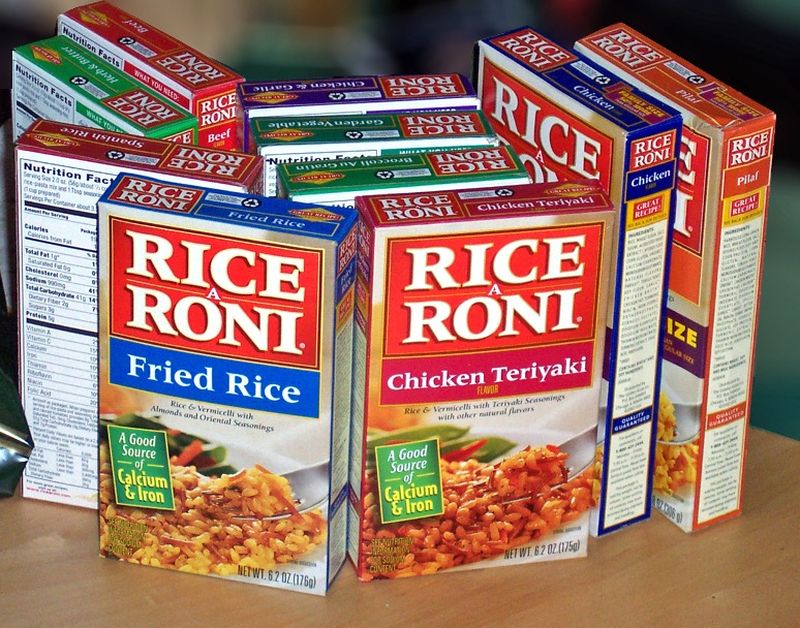
Bland rice needed rescuing in 1970s kitchens, and Rice-A-Roni answered the call; a brilliant marriage between marketing and product delivery whose “San Francisco Treat” jingle embedded in the national consciousness like an earworm hit song. The genius wasn’t just the flavor packets but the two-step cooking method that involved toasting the rice-pasta mixture before adding water – a technique that built depth and complexity professional chefs would recognize as proper fondé.
For 39 cents per box (about $2.50 today), families enjoyed flavor profiles previously requiring restaurant visits or significant cooking skills. The chicken variety served as a gateway drug to broader culinary exploration for many Americans, offering a taste of something slightly exotic without demanding unfamiliar ingredients or techniques.
17. Fondue
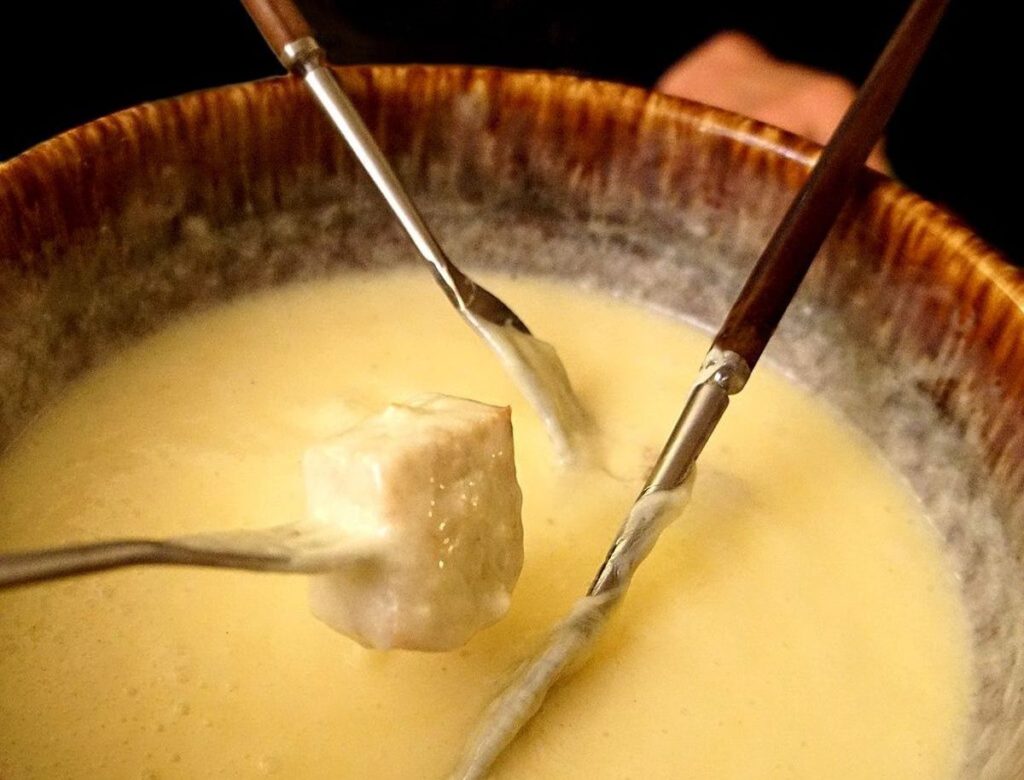
When restaurant prices spiraled beyond reach during the economic turbulence of the 1970s, fondue parties emerged as the solution, turning financial necessity into theatrical dining experiences that felt more special than their humble ingredients suggested. This communal meal elevated the simple act of melting cheese into an event worthy of special occasion status without special occasion pricing.
Those without dedicated fondue pots found that slow cookers performed admirably as substitutes, avoiding specialized equipment costs while achieving similar results. For about $8-10 total (about $50-60 today), hosts created dinner party experiences that guests talked about for weeks afterward.
16. Quiche Lorraine

If you aspired to host sophisticated dinner parties on a hamburger budget, Quiche Lorraine performed remarkable social alchemy during the economically turbulent 1970s – its French name elevating basic eggs, bacon, and cheese into something worthy of lifestyle magazines.
The buttery crust and creamy filling created a textural contrast that disguised the dish’s simplicity. The bacon added smoky complexity, making the egg mixture seem more sophisticated than its ingredient list would suggest. For approximately $4 total (about $24 today), hosts served something that fit comfortably on dinner party menus alongside much pricier offerings.
15. Rice Pudding
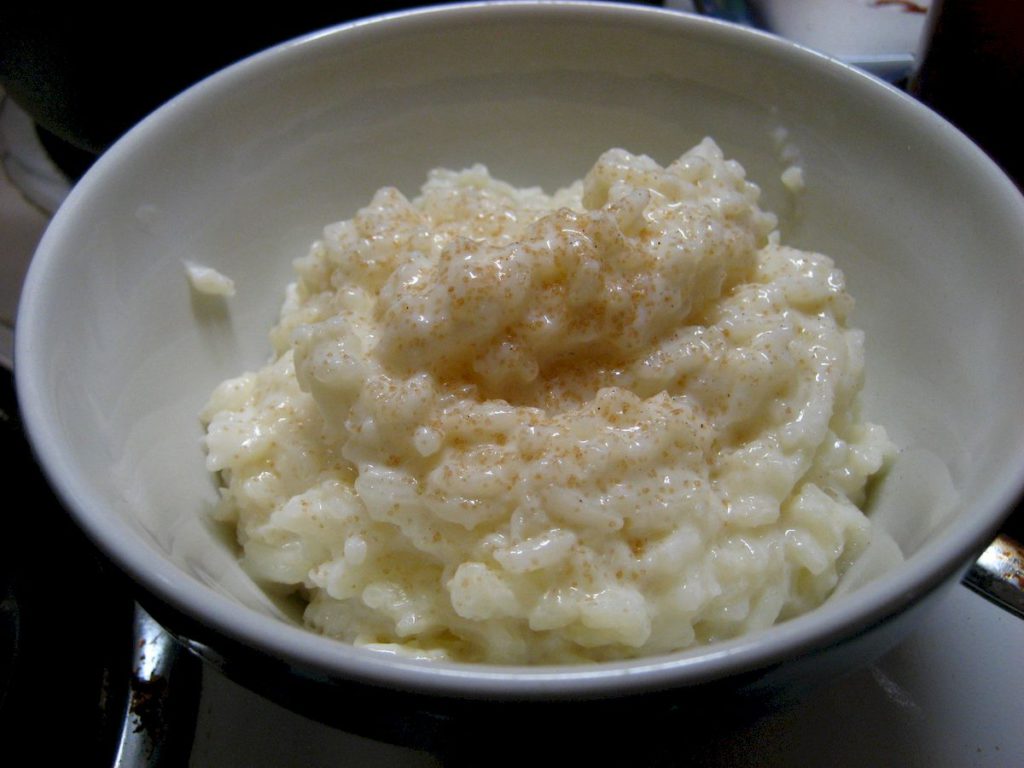
Leftover rice almost always ended up in the trash until 1970s budget cooks rediscovered rice pudding – the culinary equivalent of transmuting pennies into gold through a dessert that satisfied more thoroughly than treats costing five times as much. The simple mix of milk, sugar, and eggs built a canvas for whatever flavor accents the budget allowed, from cinnamon’s warm complexity to raisins’ chewy sweetness.
The approach needed patience more than skill – slow cooking changed humble ingredients into silky luxury that worked either warm as winter comfort or chilled for summer refreshment. At a fraction of the cost of store-bought desserts during the inflationary 1970s, rice pudding delivered remarkable satisfaction compared to its modest ingredient cost.
14. Biscuits and Gravy
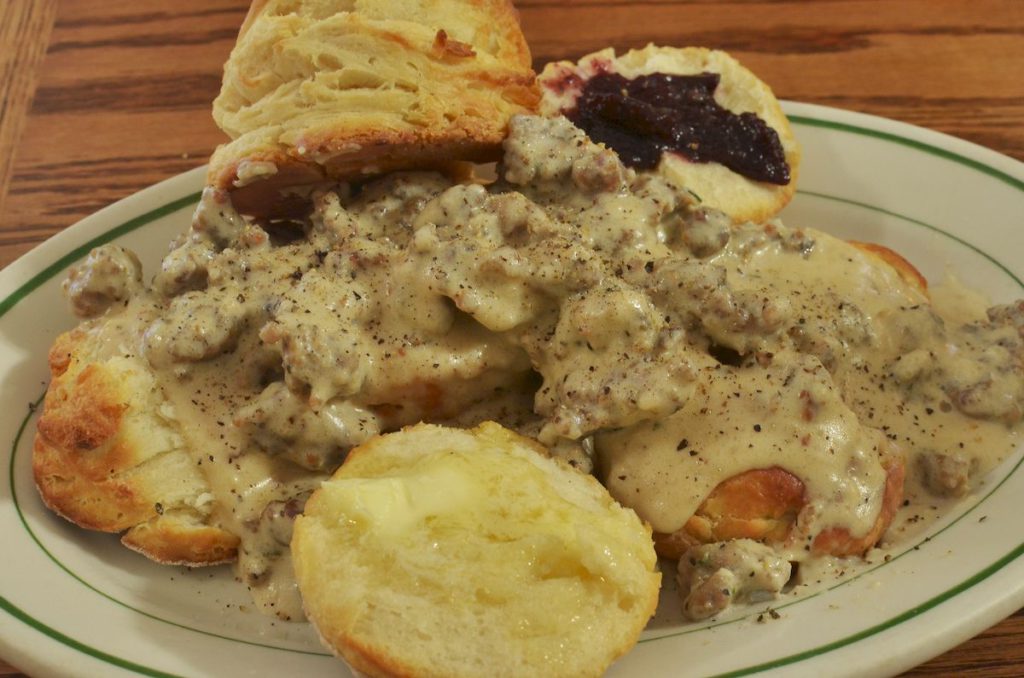
Delivering a day’s worth of energy for under a dollar, Southern cuisine’s working-class hero – biscuits and gravy – migrated north and west during rampant inflation like a comfort food missionary spreading the gospel of flour-based salvation. This breakfast powerhouse delivered pure caloric density when energy costs competed with food costs for the same limited dollars.
The technical brilliance hides behind seeming simplicity: biscuits needing just the right touch to achieve pillowy height, and gravy that turns mere pork drippings into something worthy of devotion through the alchemy of roux-making.
The dish represents budget cooking’s highest achievement – making something people would choose to eat regardless of financial circumstance. For roughly 60 cents total (about $3.50 today), it offered a meal that could fuel a full day of labor, whether physical or mental. The flavor complexity comes from proper seasoning – black pepper added with enthusiasm rather than caution creates the signature bite that cuts through the richness.
13. Sloppy Joes
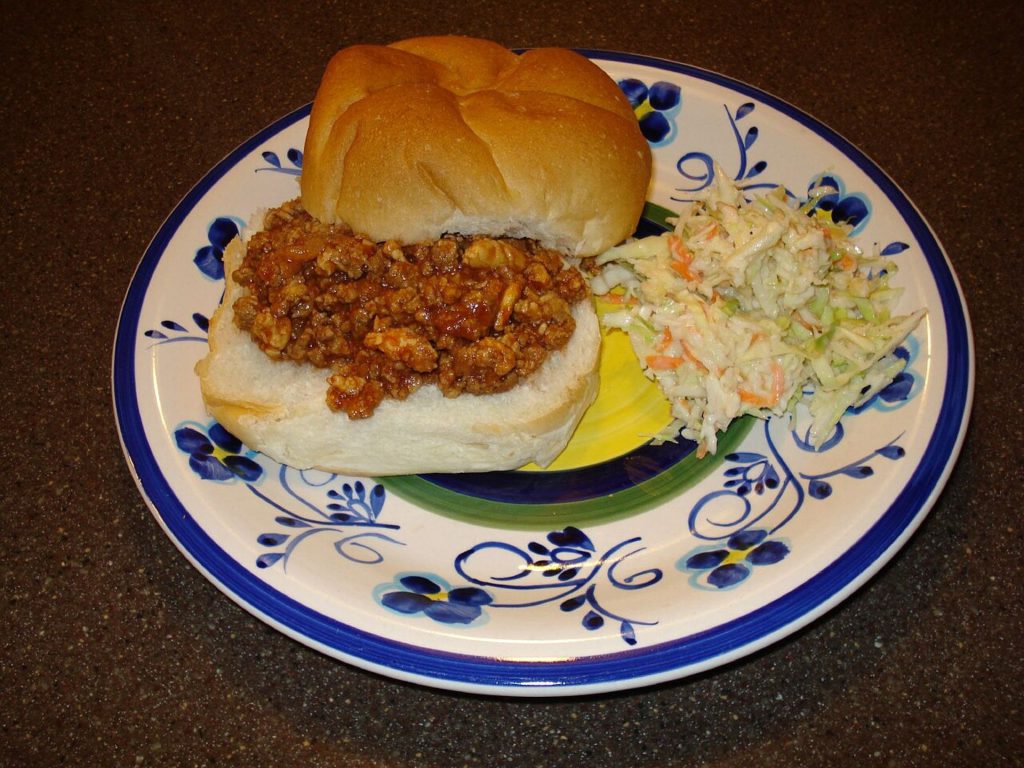
When a pound of ground beef needed to feed six hungry people, the Sloppy Joe rode to the rescue – a monument to American pragmatism during 1970s economic constraints that brilliantly rebranded messiness as a feature rather than a flaw. This brilliant creation stretched modest amounts of increasingly expensive ground beef through tomato-based sauce that packed flavor impact far beyond its cost.
The brilliance extends beyond mere flavor to psychological territory – by deliberately naming and celebrating the inherent messiness, the dish turns what might seem a negative into part of its identity. For approximately $3-4 total (about $18-24 today), families fed 4-6 people with minimal prep effort.
12. Grilled Cheese and Tomato Soup
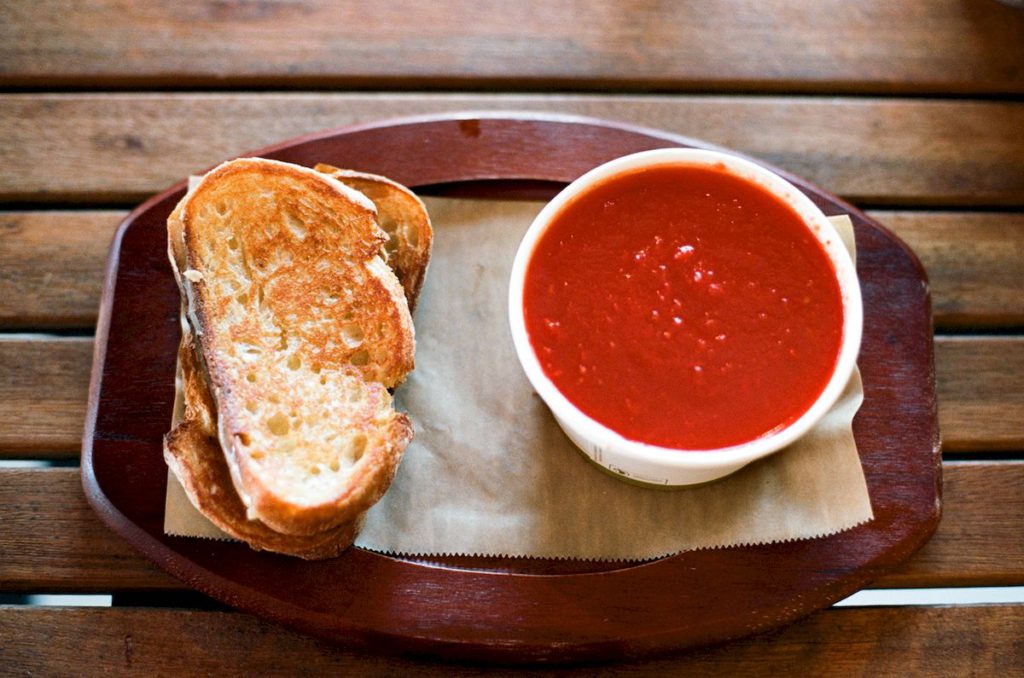
Bad economic news required immediate culinary comfort, and nothing delivered with more ruthless efficiency than grilled cheese paired with tomato soup, functioning like a weighted blanket for the soul during a decade of financial anxiety. The sandwich itself showcases technical perfection disguised as simplicity – butter-bronzed bread providing that signature crunch, giving way to cheese pulled into gooey submission.
Together they formed the kind of satisfying meal that challenges the link between price and pleasure, with a total cost of around 40 cents per serving. The textural play – crisp exterior, molten cheese center, and silky soup – offered as much sensory satisfaction as meals costing twenty times more.
11. Beef Stroganoff
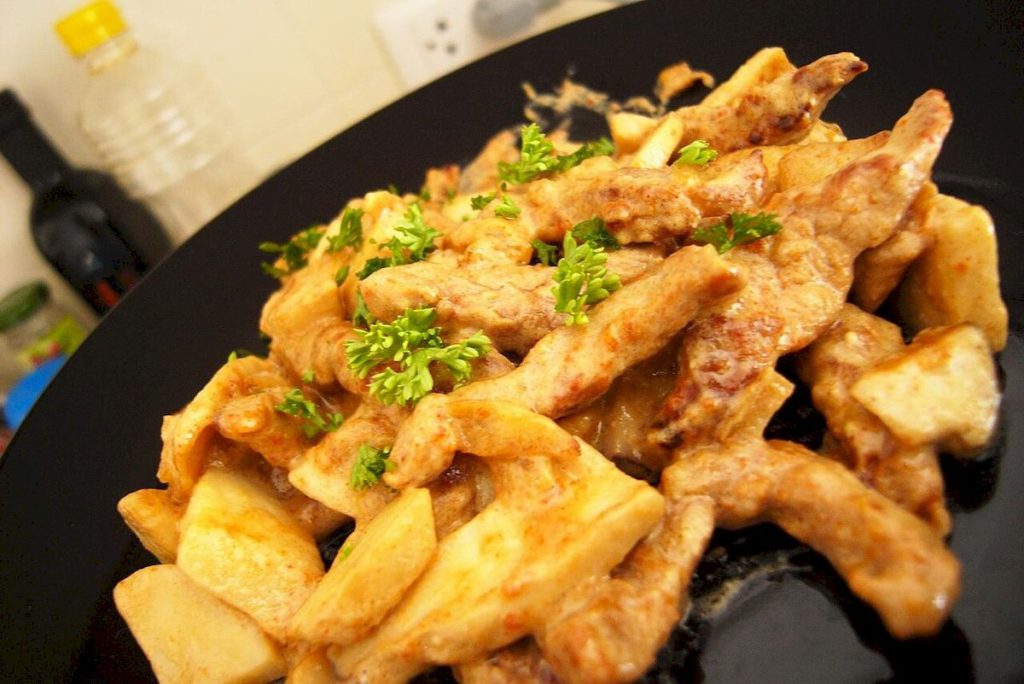
A half-pound of beef fooled dinner guests into thinking they were eating Russian aristocratic cuisine through the remarkable economic sleight-of-hand of 1970s beef stroganoff – stretching increasingly expensive protein into meals that tasted luxurious rather than restricted.
The American version strayed far from its Russian aristocratic origins, embracing cream of mushroom soup as a shortcut to creamy sauce that would horrify purists but saved countless dinner plans.
Cooks cleverly added economical mushrooms to extend the meat’s presence, creating abundance from scarcity. Even more ingenious was the shift to ground beef when prices for whole cuts soared – a change that not only cut costs but improved sauce integration. For approximately $5 total (about $30 today), families enjoyed meals that maintained the important feeling of prosperity despite financial challenges.
10. Creamed Chipped Beef (SOS)

Shelf-stable for years and ready in minutes, creamed chipped beef (SOS in military shorthand) captured Nixon-era budget cooking perfectly – those paper-thin beef slices floating in white sauce like survivors of a dairy shipwreck on dinner tables nationwide.
During the 1973 meat crisis, when supermarket butcher cases emptied faster than concert venues after shouting “fire,” dried beef proved itself the cockroach of proteins – virtually indestructible and somehow still available when everything else vanished.
The method couldn’t be simpler – a basic white sauce from flour, butter, and milk provided the canvas for those salty beef confetti pieces. For roughly 75 cents total, it fed a family of four – economic math that seems like science fiction in today’s grocery landscape.
9. Fried Bologna
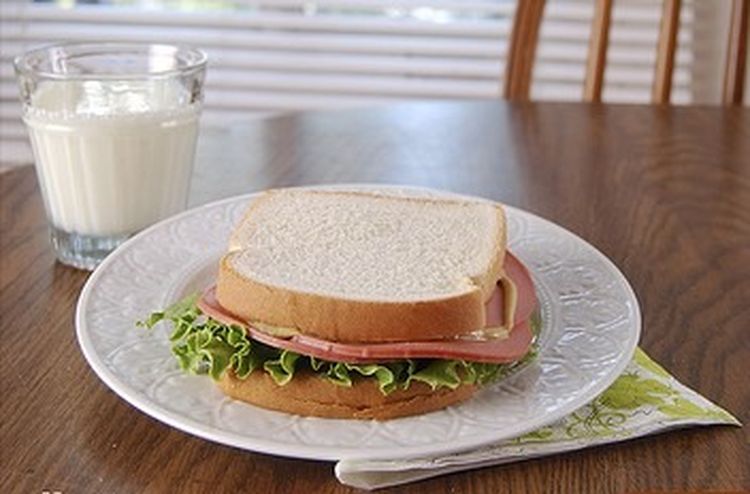
Ask anyone who survived childhood in the stagflation era about fried bologna, and watch their eyes take on the thousand-yard stare of nostalgic reverence. This wasn’t merely budget protein – it was kitchen alchemy that turned a 79-cent processed meat disc into something transcendent. The technique demanded surgical precision: those four strategic cuts along the edges kept the meat from buckling like a cheap vinyl record left in the sun.
The final product – edges crisped to a mahogany finish while the center stayed tender – offered textural contrast that puts many modern bistro dishes to shame. Nestled between pillowy white bread with a slick of yellow mustard providing acid balance, this sandwich packed more satisfaction than its humble components had any right to.
8. Hamburger Helper
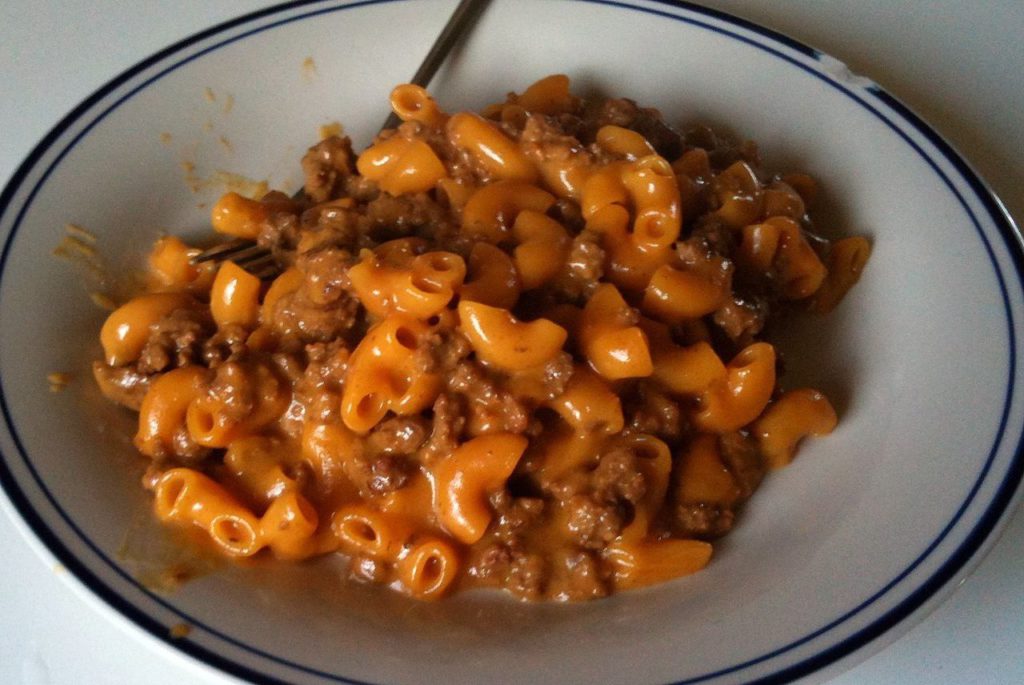
With just a single pound of increasingly expensive ground beef, 1970s families could feed six people for less than $1.50 thanks to General Mills’ revolutionary Hamburger Helper. The concept showed brilliance in simplicity: stretch a single pound of increasingly expensive ground beef into a complete meal. No culinary school degree needed, just a pan and 20 minutes of patience.
The iconic “helping hand” mascot effectively threw a financial lifeline to families drowning in inflation. Those flavor packets, particularly the Rockstar Cheeseburger Macaroni, yielded consistent results with minimal effort, creating meals that felt like eating the same comforting song played in different keys throughout the week.
For approximately $1.50 total (around $10 in today’s money), families served something that appeared planned rather than desperate.
7. Government Cheese
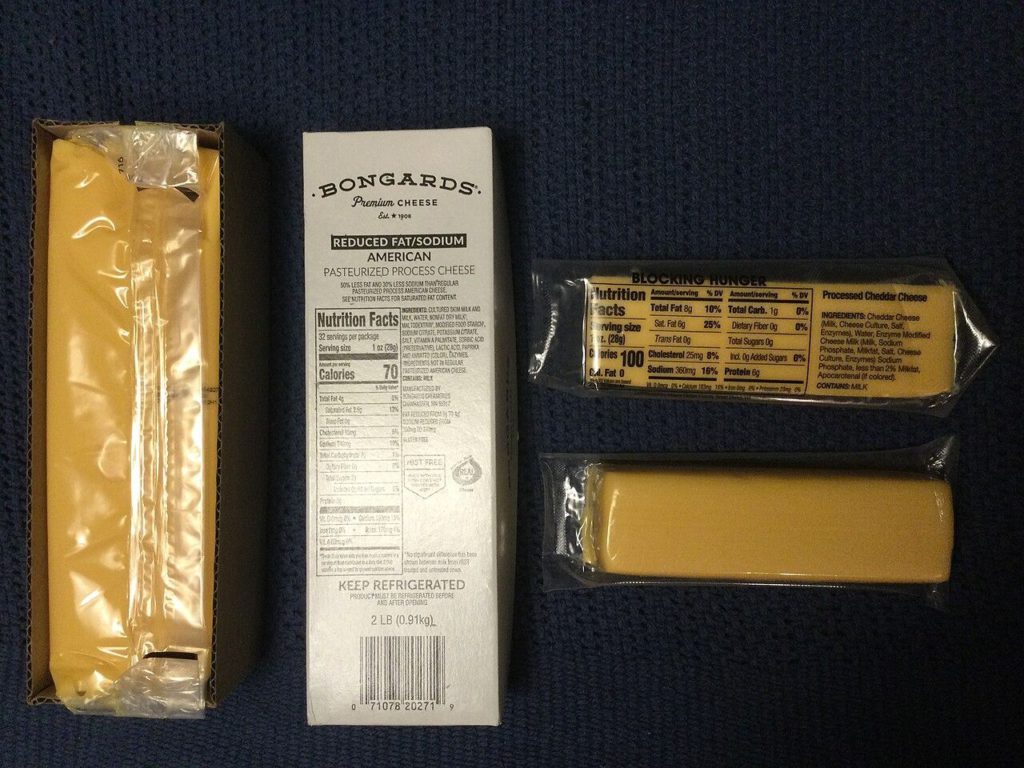
In the cultural memory of 1970s America, few foods and classic 1970s snacks carry the complicated legacy of government cheese. Those massive orange blocks arrived with all the subtlety of Soviet architecture – utilitarian, imposing, and impossible to ignore. Distribution centers became neighborhood social hubs where economic struggles temporarily faded in the shared experience of waiting for those unassuming cardboard boxes.
The cheese itself boasted almost supernatural melting properties that would make a modern molecular gastronomist jealous. Its creamy texture elevated the humblest mac and cheese into something that could momentarily make children forget about Star Wars. A simple baked potato topped with a melted slice became dinner party-worthy, offering maximum flavor return on minimal investment.
6. Dutch Babies
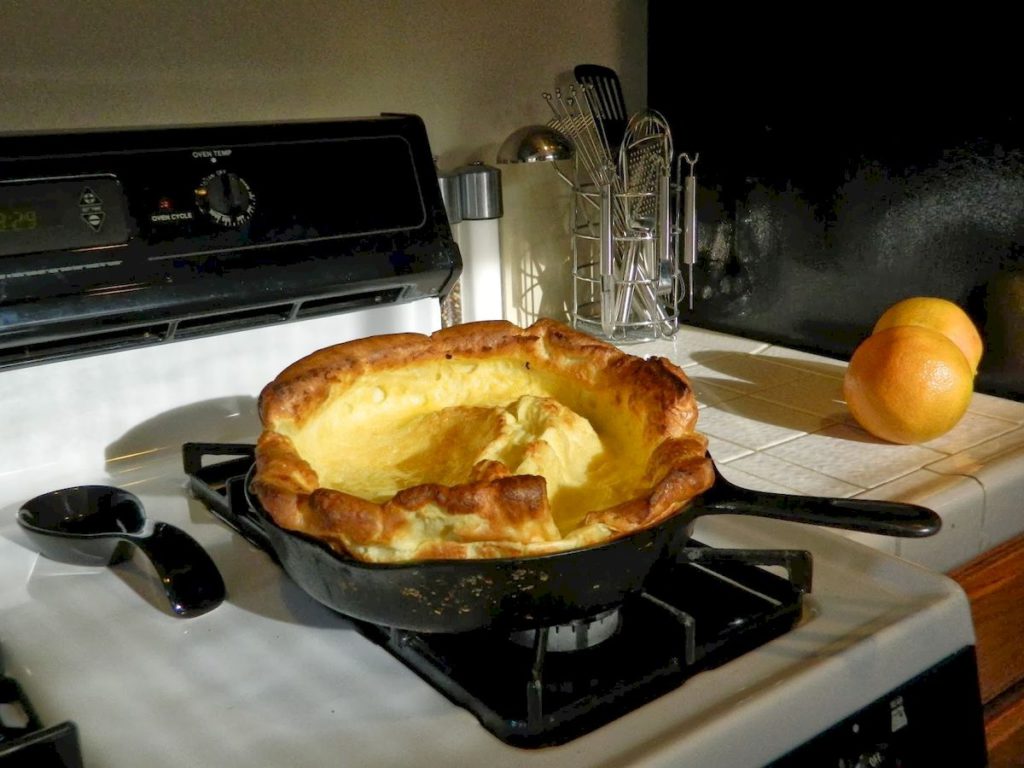
With weekend breakfast budgets tightening under inflation, families discovered how three basic ingredients could puff dramatically in the oven, creating the culinary theater of Dutch babies. This breakfast marvel generated drama from the humblest pantry basics (eggs, flour, milk) through simple physics.
For approximately 50 cents total, families enjoyed weekend breakfast experiences that felt special during economically unspecial times. The Dutch baby’s minimal ingredient list taught an important lesson about food value – sometimes the most memorable dishes come not from exotic ingredients but from good technique applied to basics.
5. Turkey Tetrazzini
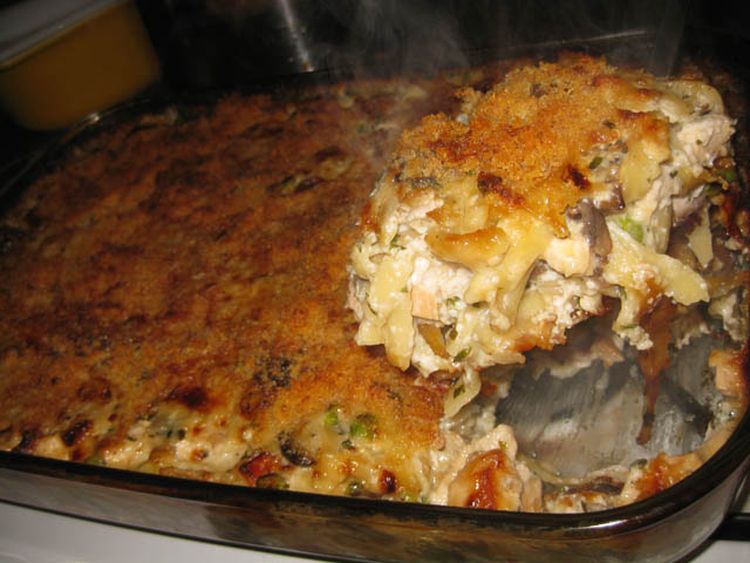
Turkey Tetrazzini exemplifies how economic necessity pushed American home cooks to become masters of culinary reincarnation. This dish accomplished the seemingly impossible – making turkey leftovers exciting enough that families didn’t collectively groan when it appeared on the table for the third time in a week.
Created for opera soprano Luisa Tetrazzini (the Lady Gaga of her day), this elegant pasta casserole democratized down the social ladder during the recession-plagued 1970s faster than disco moved from underground clubs to suburban wedding receptions.
The shift from high-society dining to thrift cooking happened through strategic shortcuts like cream of mushroom soup – the duct tape of 1970s kitchens that solved culinary problems at a fraction of the cost of scratch cooking.
4. Corn Casserole
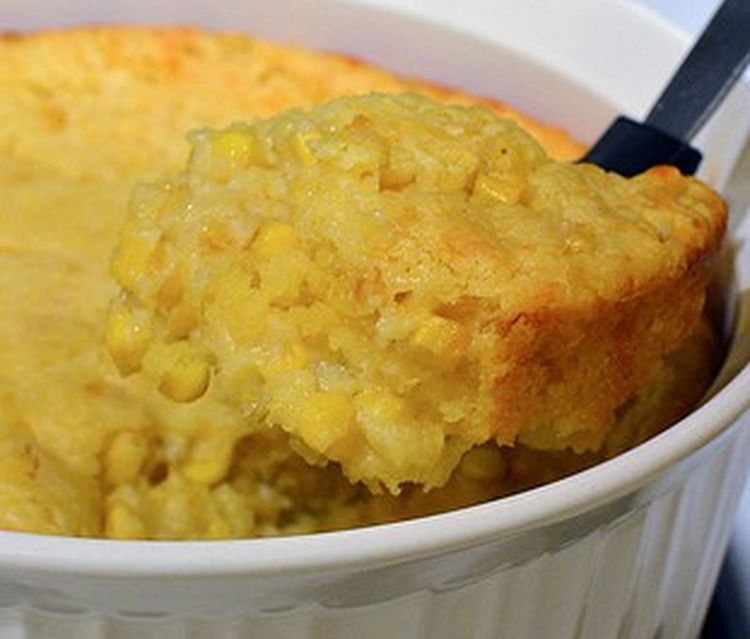
Built from two types of canned corn and minimal pantry ingredients, this golden-topped casserole could feed 8-10 people for less than a dollar while consistently earning the distinction of ‘first empty dish’ at 1970s potlucks. This humble side dish embodied the decade’s approach to cooking – basic ingredients, minimal work, maximum payoff.
Built from canned corn and creamed corn (already a strange engineered food itself), the casserole asked only for pantry staples to produce something greater than what its modest parts suggested.
The magic happened in its texture shift – ordinary canned vegetables evolved during baking into something with a pudding-like center and slightly caramelized top that hit pleasure centers like a warm hug from a favorite aunt. For roughly $1 in Nixon-era currency, it fed 8-10 people, matching the economy of stretching a tank of gas during the oil embargo.
3. Peanut Butter and Jelly Sandwiches
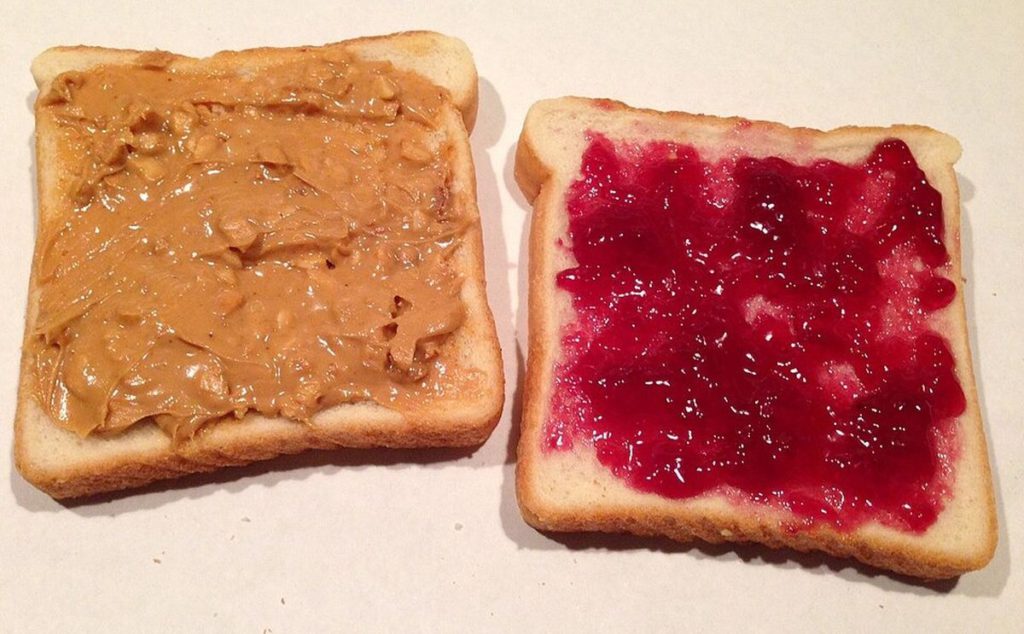
At just 15 cents per serving, the humble PB&J delivered more economic stability to American lunchboxes than any other food during the volatile 1970s. This sandwich doesn’t just show budget cooking; it stands as perhaps America’s most democratic food, crossing all class barriers with the same simple formula. s.
Beyond its clear economic perks (complete protein and fruit serving for roughly 15 cents per sandwich), the PB&J offered stability in a decade marked by uncertainty. While prices jumped wildly at restaurants and meat counters, this lunchbox staple kept its steady costs.
2. Chicken a la King

Chicken a la King exemplifies the 1970s kitchen philosophy of ingredient reincarnation – the art of turning leftover protein into something that feels purposeful rather than obligatory. This creamy dish gave yesterday’s chicken royal treatment through a lush sauce dotted with mushrooms and pimentos, served over whatever carbohydrate the budget allowed that week.
For around $4 total (about $24 today), the dish walked a fascinating nutritional tightrope – undeniably rich from butter and cream components, while simultaneously stretching expensive protein to feed more people with less meat. The vibrant red pimentos added visual appeal far beyond their cost, giving the impression of careful garnishing without requiring culinary school skills.
1. Tuna Noodle Casserole
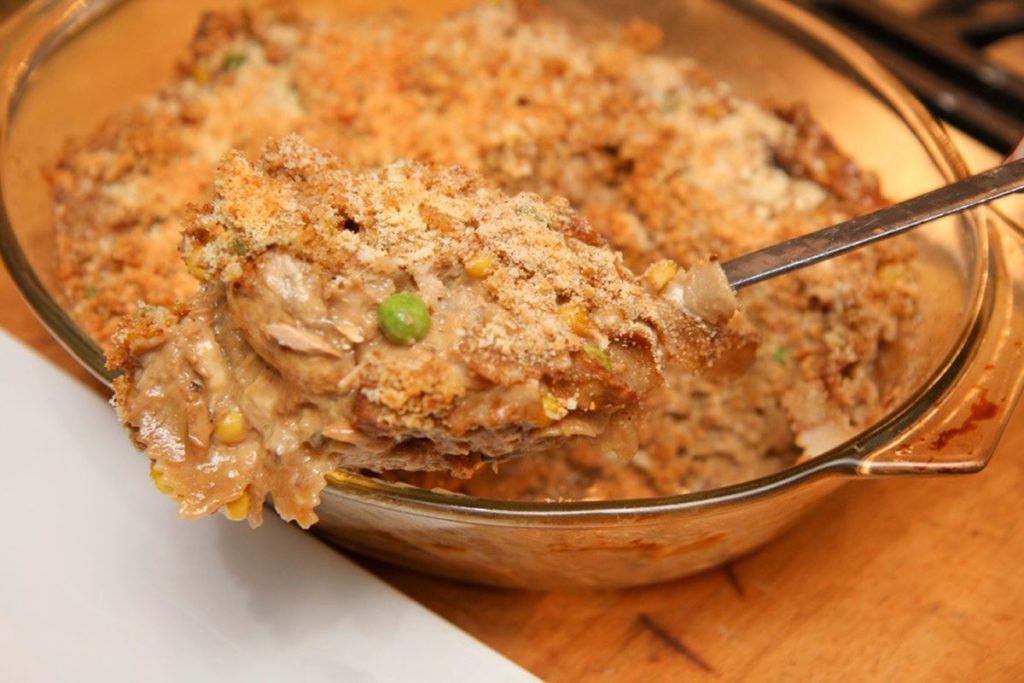
Perhaps no dish captures the spirit of 1970s economic resilience better than tuna noodle casserole – the budget cooking equivalent of making platinum records in a garage studio. This masterpiece of pantry know-how turned shelf-stable basics into hot, satisfying meals when fresh protein prices shot beyond reach.
The creamy texture from condensed soup, protein boost from canned tuna, and structure from egg noodles formed complete nutritional packages needing no additional sides – the culinary Swiss Army knife of its day.
The crowning touch came with the crunchy topping – crushed potato chips or breadcrumbs that added textural contrast, lifting the dish from mere sustenance to genuine craving. For approximately $1.50 total (about $9 today), it fed entire families with minimal effort. The widespread memory of this dish, like other dinners from the 1970s, speaks to its importance during tough economic times.





















